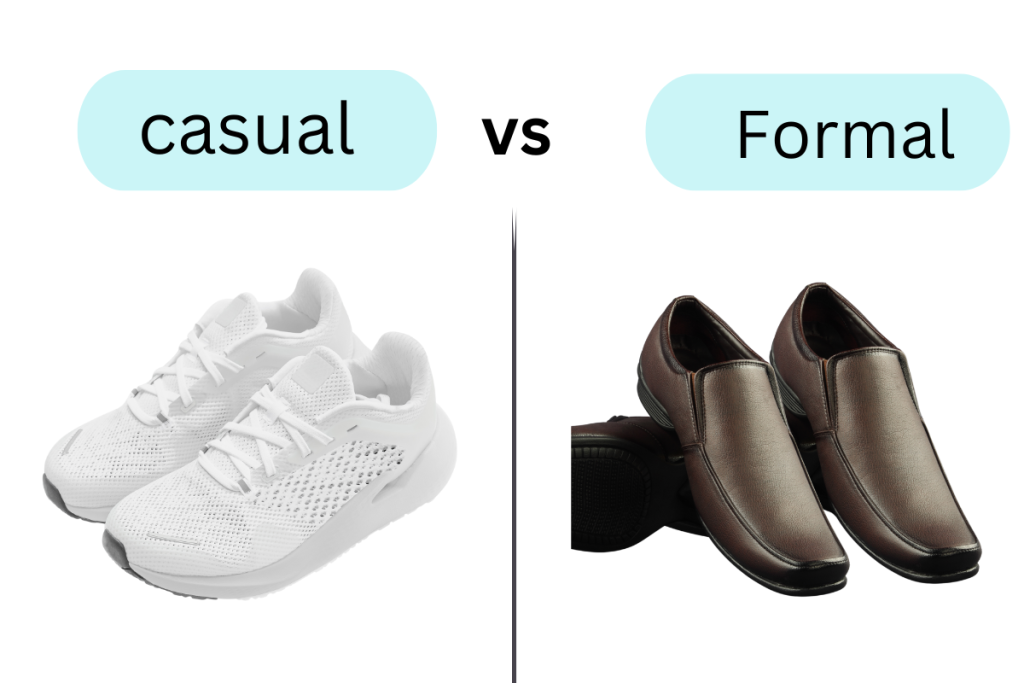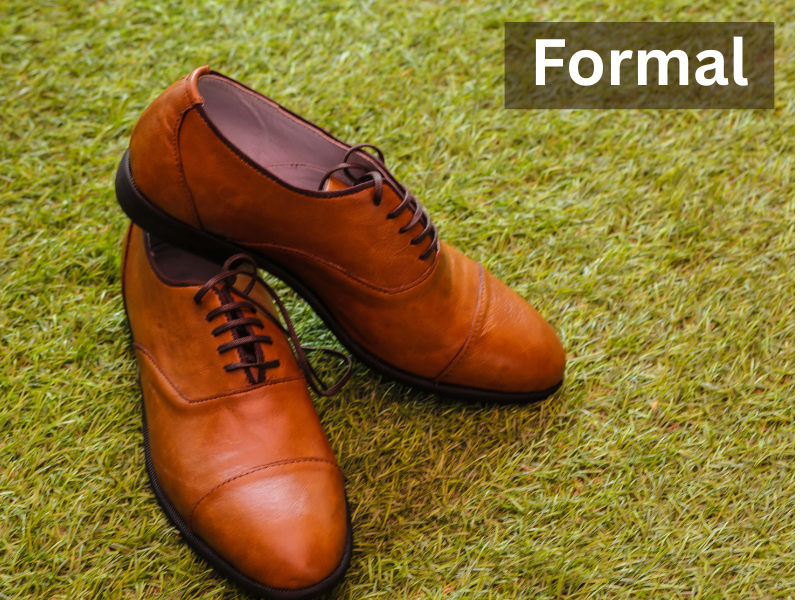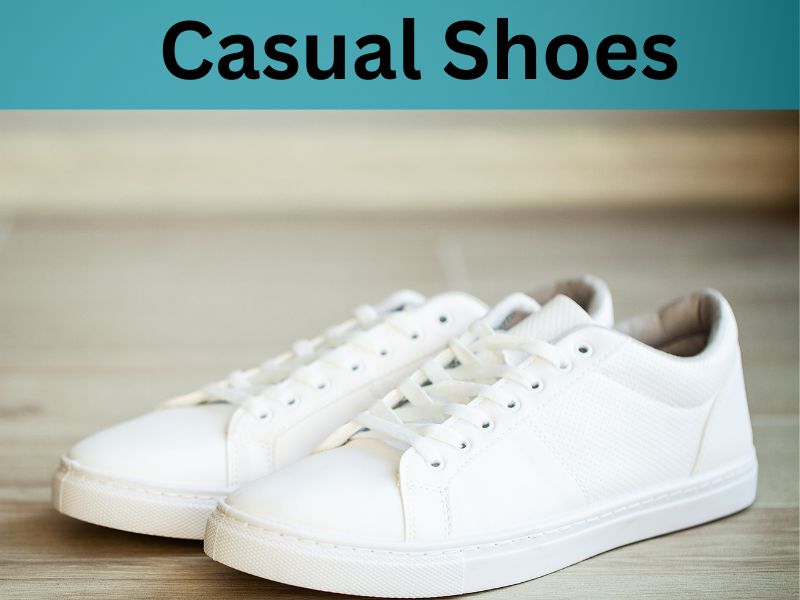
The distinction between casual and formal shoes primarily revolves around their intended use, design features, and the events for which they are appropriate. Footwear serves more than just the function of protecting your feet; it plays a crucial role in your overall appearance and influences how others view your fashion sense. Let’s explore the key factors that differentiate these two types of shoes.
So, what distinguishes casual shoes from formal shoes? Why are sneakers unsuitable for a wedding, while leather Oxfords are not ideal for a casual brunch?
Let’s explore this topic in a clear and engaging manner!
What Are Formal Shoes?

Formal shoes are specifically crafted for special occasions, professional settings, and events where appropriate attire is expected.
These shoes feature a refined and tailored design, specifically crafted to complement formal outfits like suits, tuxedos, dress pants, and blazers.
Key Features of Formal Shoes:
Materials: Typically crafted from smooth leather, suede, or synthetic alternatives.
Design: Simple, classic, and sophisticated, avoiding overly flashy elements.
Shape: Features a sleek toe box, low profile, and a narrow fit.
Colors: Generally available in neutral shades like black, brown, tan, and occasionally burgundy.
Closure Type: Includes laces (as seen in Oxfords or Derbys), buckles (Monk Straps), or slip-on styles (Loafers).
Sole: Characterized by a thin, smooth design with a slightly elevated heel.
When Should You Wear Formal Shoes?
- In professional or business meetings
- During weddings and receptions
- For job interviews
- At corporate events
- For formal dining occasions
In summary, formal shoes are essential for situations where first impressions are significant and dress codes are enforced.
Casual shoes prioritize comfort, creativity, and suitability for daily wear. They are crafted for informal environments where style can be playful, relaxed, or fashionable.
In contrast to formal footwear, casual shoes allow for personal expression.
Essential Characteristics of Casual Shoes:

Material: Utilizes breathable materials such as canvas, mesh, rubber, or synthetic blends.
Design: Features sporty, vibrant, and imaginative aesthetics.
Shape: Offers a wider fit, cushioned insoles, and supportive soles.
Colors: Available in a vast array, ranging from classic white to bright neon shades.
Closure Type: Includes options like slip-ons, Velcro, or laces, depending on the design.
Sole: Equipped with thick rubber soles that provide excellent traction, suitable for walking or various activities.
Appropriate Occasions for Casual Shoes:
- Social outings with friends or family
- Shopping and running errands
- Casual gatherings or meetups
- Traveling and sightseeing
- Daily wear at work (if permitted by the dress code)
Can Casual and Formal Shoes Be Combined?
The distinction between casual and formal footwear is becoming increasingly ambiguous due to contemporary fashion trends. Nowadays, it is certainly possible to blend these styles, provided it is done thoughtfully.
- Pair clean white sneakers with a blazer and chinos for a sophisticated appearance.
- Team leather loafers with tailored jeans and a collared shirt for a smart-casual vibe.
- Coordinate Chelsea boots with semi-formal wear to achieve an elegant yet laid-back style.
Expert Tip: Always ensure your shoes are clean and well-cared-for, regardless of their style.
The Importance of Understanding the Distinction
Recognizing the differences between casual and formal shoes is essential for:
- Dressing suitably for various occasions
- Making a memorable impression
- Enhancing your confidence and comfort
- Avoiding fashion missteps
For instance, wearing athletic shoes to a job interview may convey an inappropriate message, while donning leather Oxfords at a beach gathering could feel out of place.
Final Thoughts
Ultimately, both casual and formal shoes play vital roles in your wardrobe.
Casual footwear emphasizes personal expression and comfort, while formal shoes represent elegance and structure.
The ideal strategy? Maintain a diverse collection of both styles. This way, whether you are attending a business meeting or enjoying a coffee outing, you will always present yourself with style.
